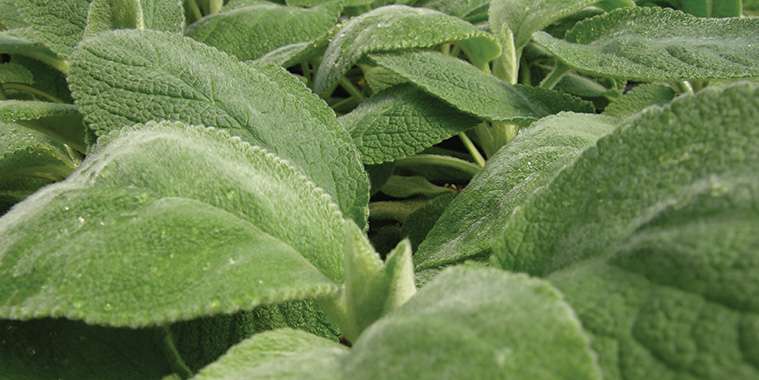By Dorothy Dobbie
It’s the time of year when the herb sage comes into view on our dinner tables as a key ingredient in turkey dressings. Its botanical same is salvia.
So, salvia is really sage. But sometimes sage isn’t really salvia or sage.
Confused?
Common sage and diviner’s sage are both Salvia, but Russian sage is Perovskia and Jerusalem sage is Phlomis. Salvia, Perovskia and Phlomis are all members of the Lamiacea family, also known as the mint family.
If that isn’t confusing enough, recently the powers that be have reclassified rosemary as a sage!
The true salvias are versatile in the garden. A reliable bloomer, mealy cup sage or Salvia farinacea, sends out lovely spikes of blue, both powder blue and heavenly dark blue, purple, or pink. It is another salvia, scarlet sage or Salvia splendens that paints great swathes of crimson in formal plantings. Clary sage, Salvia scleream, has interesting flower bracts that fade from a light base to a dark pink or mauve tip. Salvia viridis, also sometimes called clary sage, is prized for its beautiful leafy bracts of veined pink or purple. Fascinating and beautiful Salvia guaranitica, sold under the variety name ‘Black and Blue’, has a bottle-blue flower set in a black calyx. The pretty blue Russian sage has become fairly popular in our gardens.
And that would just be the beginning of the garden salvia possibilities. But salvia is much more than just a star on the ornamental garden stage.
Salvia officinalis, common sage, is considered one of the essential herbs for British, North American, Italian and Middle Eastern cooks, used in such delicious foods as turkey stuffing and lasagna. Other varieties used for cooking include clary sage (S. sclarea) and pineapple sage (S. elegans).
You may not want to cook with diviner’s sage (S. divornum), which can be a little bit “trippy” because this so-called diviner’s sage contains a potent psychoactive compound. Native to Mexico, it has long been used by the Mazatec shamans to induce visions. It’s developed quite a following amongst the recreational drug-using segment of society since the rise in popularity of the Internet. It has low addictive properties, but several American states have criminalized its possession. Diviner’s sage is often simply referred to as salvia, so be careful what you ask for. It is also used as a diuretic.
One of the most unusual salvias is Salvia argentea. A biennial, it shows up every few years in garden centres for its lovely, hairy, silver leaves. Problem is that if you over winter it, the plant changes into an ugly duckling in its second year, the leaves becoming nondescript while it sends up a scape of equally unremarkable flowers.
Sage is often used for smudging, a cleansing and healing ritual involving smoke and employed by several Indigenous cultures. It is among the four sacred plants: tobacco, sage, sweetgrass and cedar. But sage is not exclusive to native Americans. An ancient Arabian proverb asks, “How can a man die when he has sage in his garden?”
Salvia is linked to salvation and both words derive from the Latin word, “salvere” for “heal” or to feel well or healthy. A sage is a wise person. Sage has been credited with slowing down the aging process. Burning sage leaves is also said to attract money. If that doesn’t work, perhaps you can use it to protect yourself from the evil eye or reverse a spell.
A 2003 double-blind scientific study showed promising results from treating mild to moderate Alzheimer’s patients with extract of common sage. After four months of daily treatment, patients treated with the sage extract showed better cognitive function. Further studies done in 2012 with Salvia divornum have underlined these findings. Apparently, it also holds out promise for addictions. Further studies show that sage can improve memory, attention and executive function, alertness and mood.
Furthermore, common sage has been used for centuries to reduce sweating, and no modern research has disproved its efficacy. In the twenties, people used sage to make tincture and pour-ons to control night sweats for people with tuberculosis.
Sun-loving plants such as sage never truly thrive on a windowsill in winter because there simply isn’t enough light, but you can keep a sage plant going for several months. Give it all the direct light you can and don’t over water.
Dorothy Dobbie is the publisher of Manitoba Gardener Magazine.



